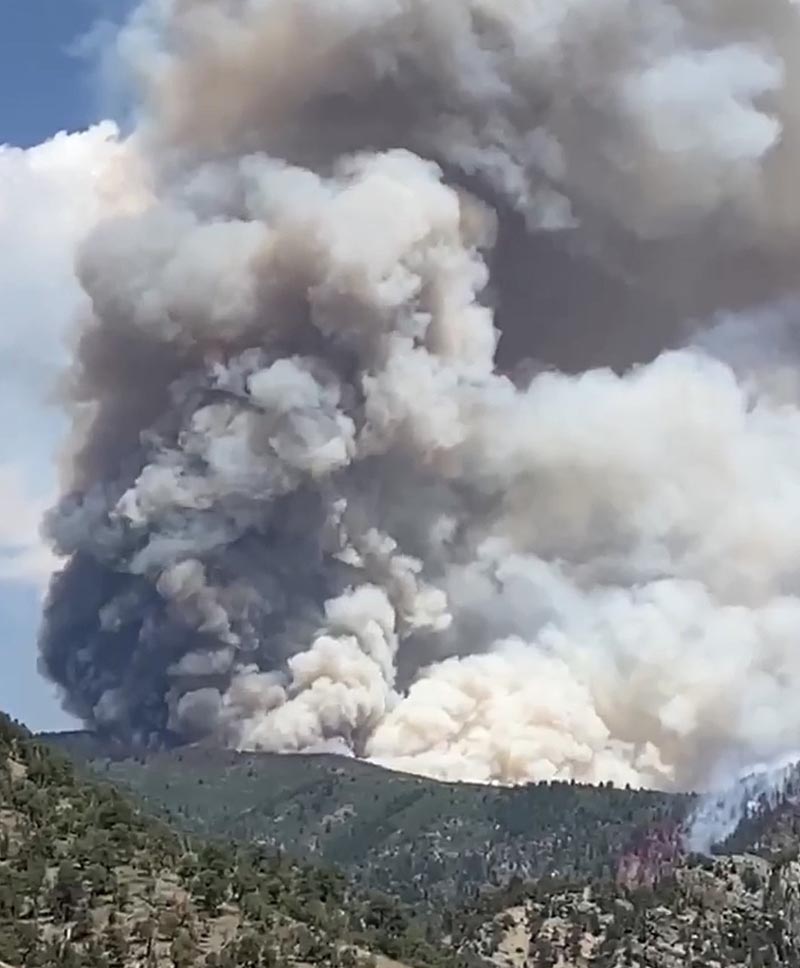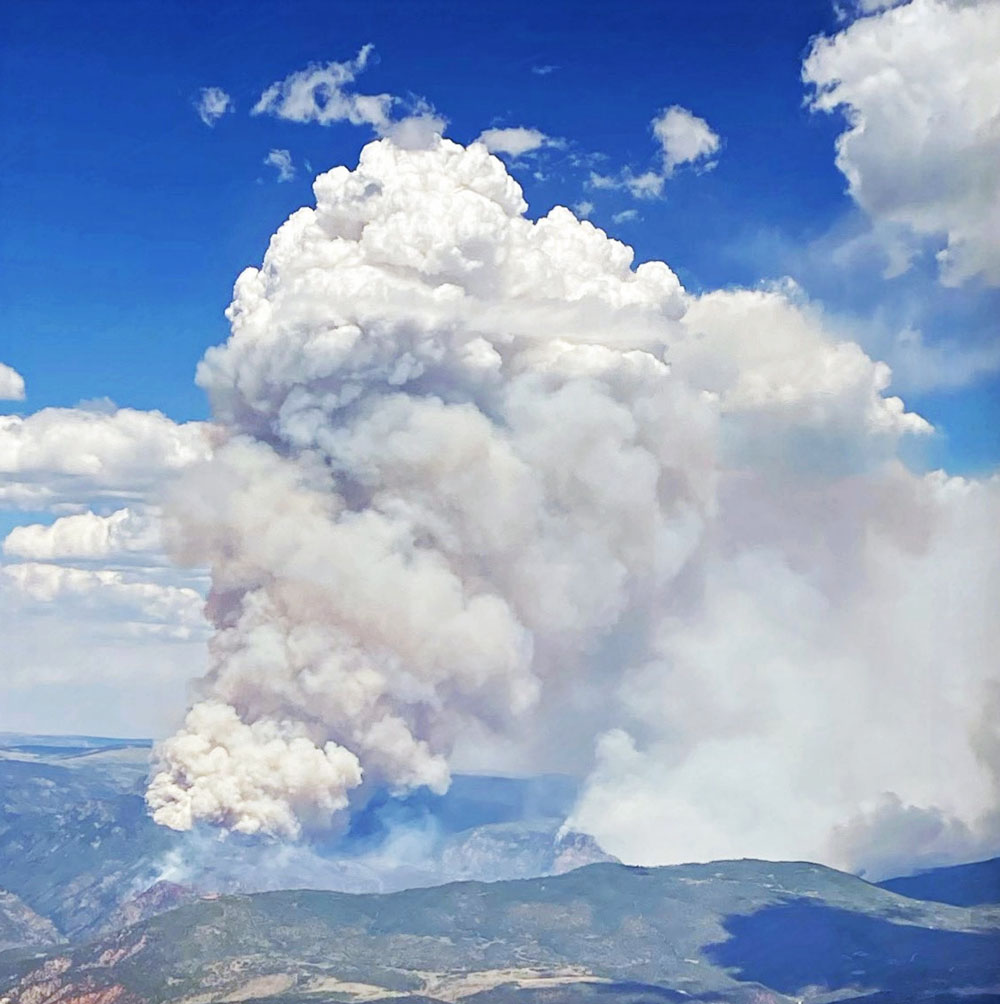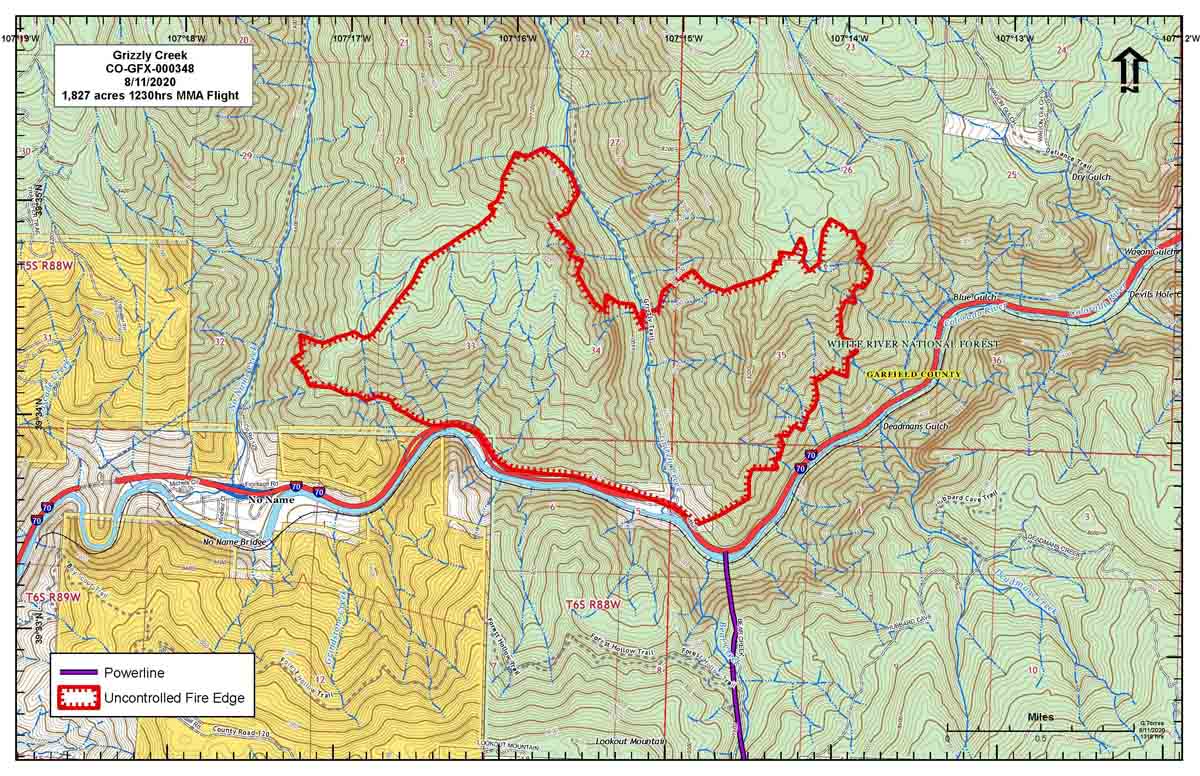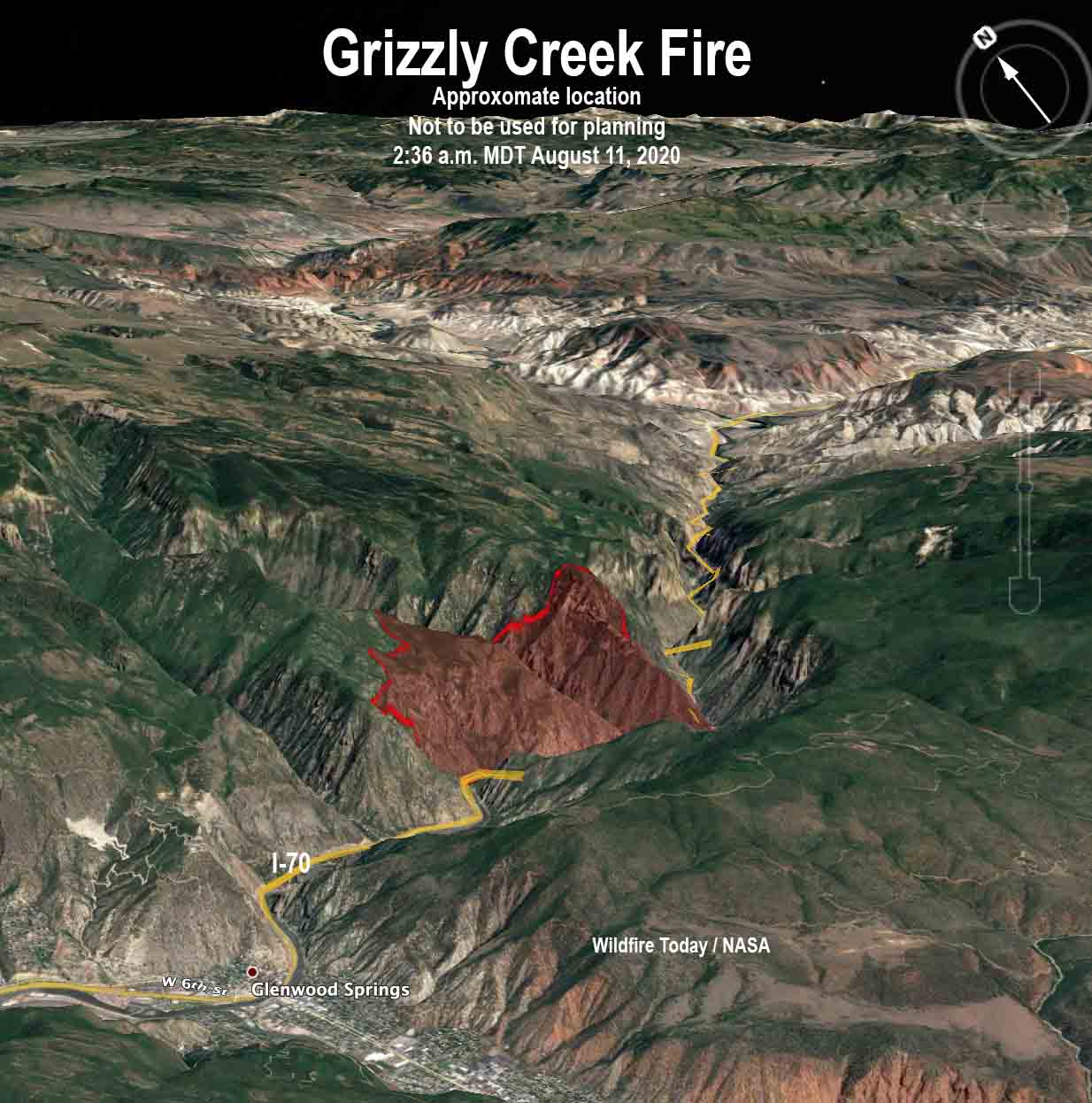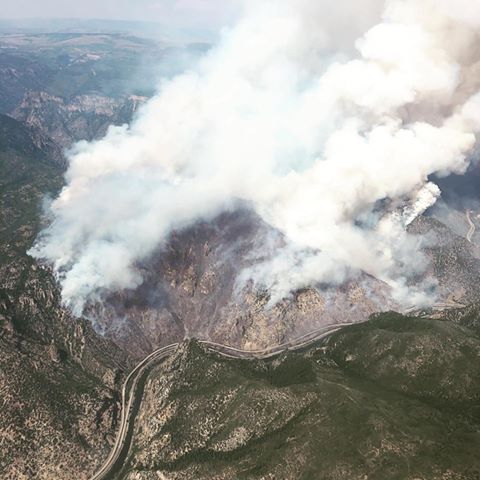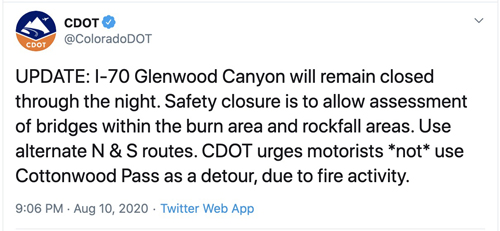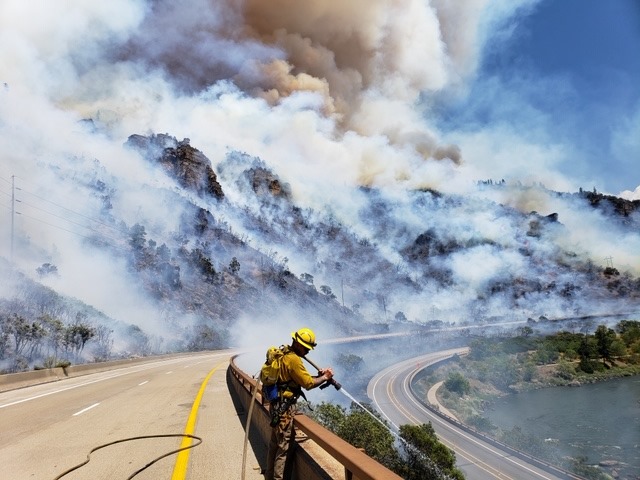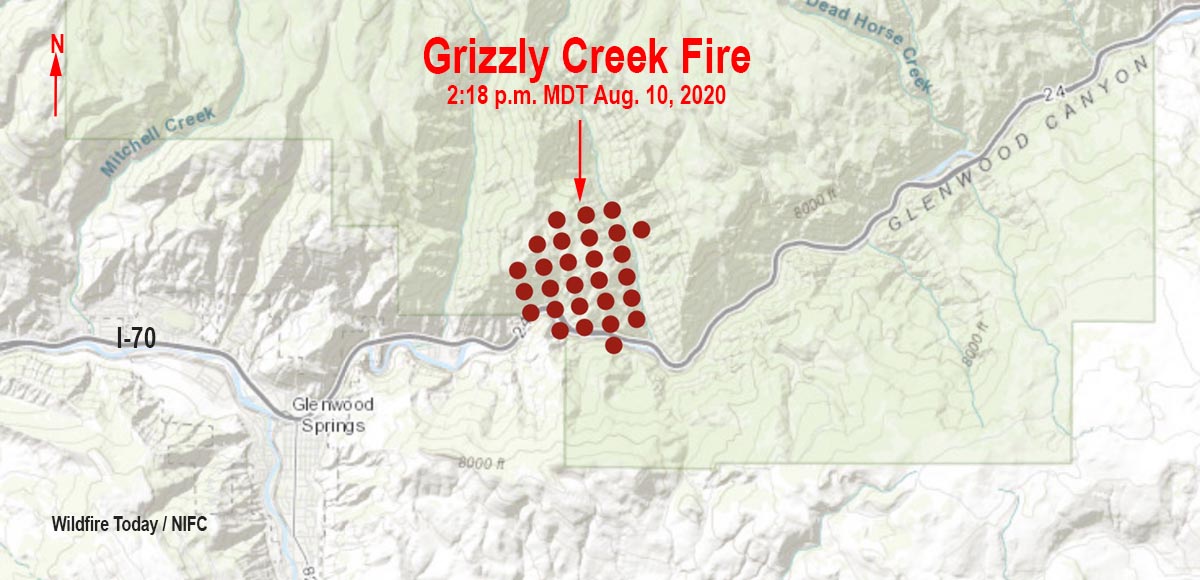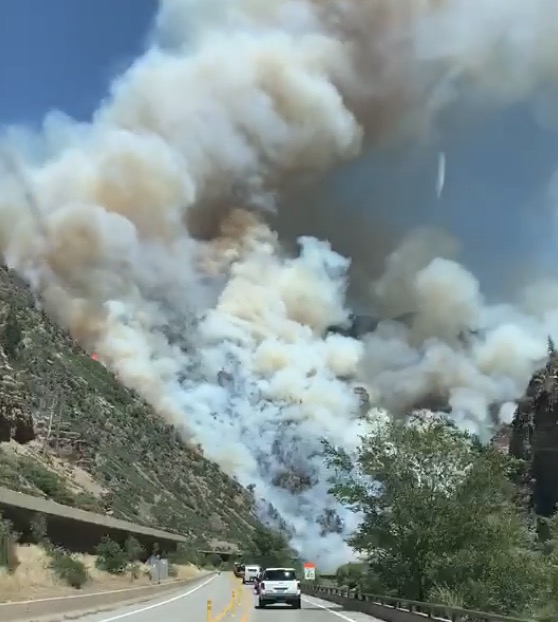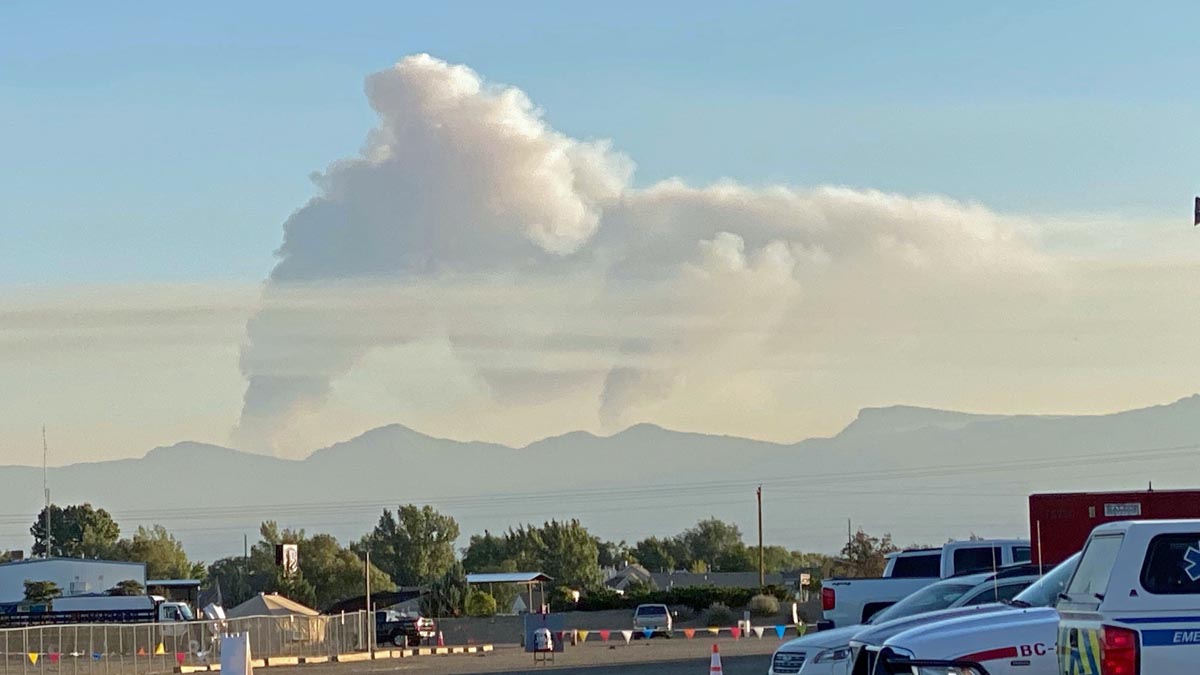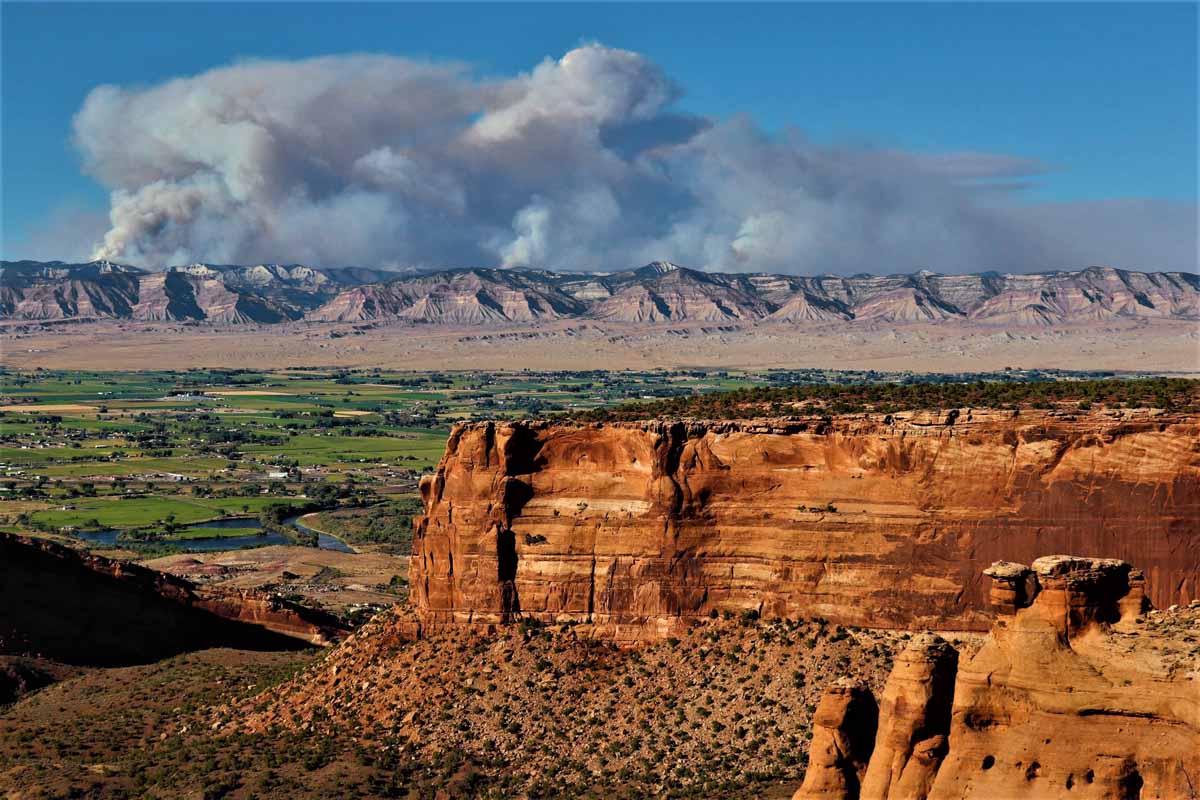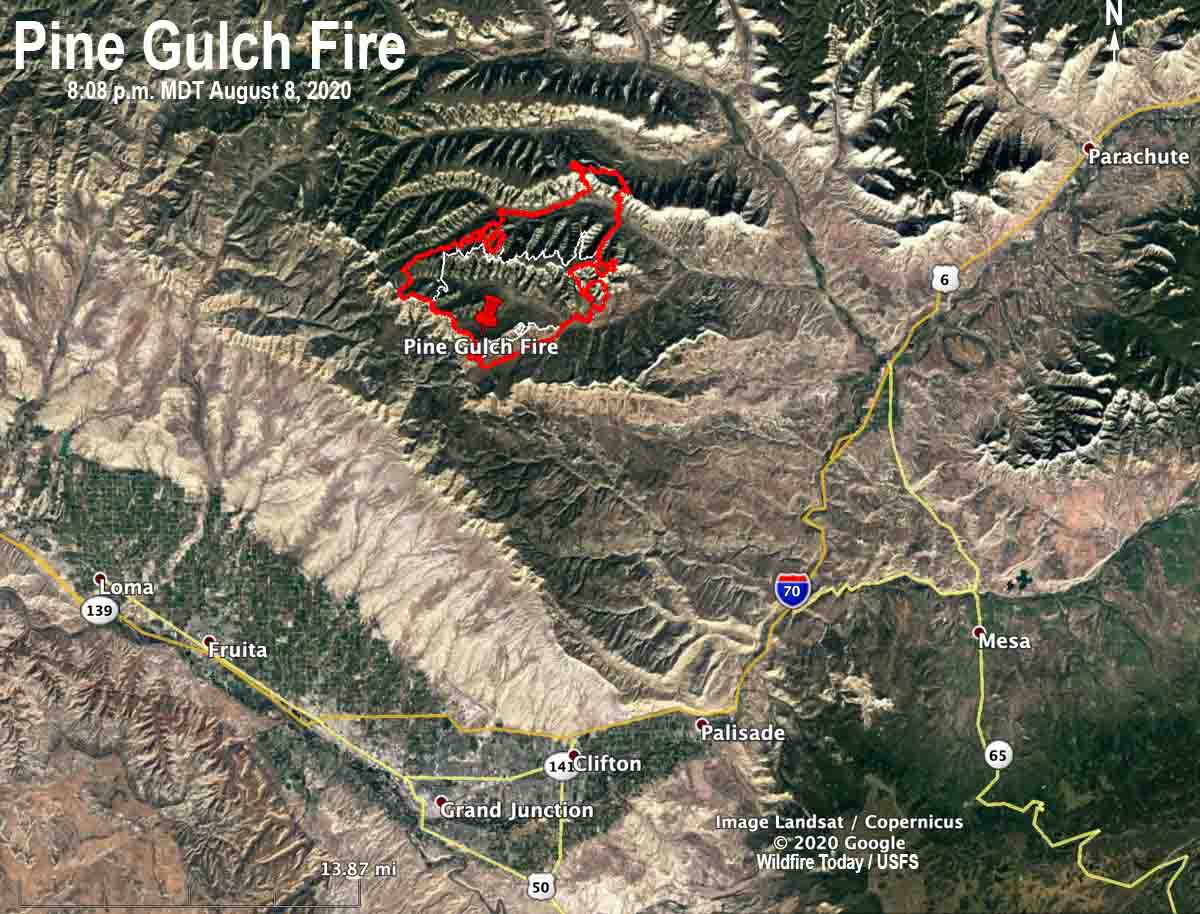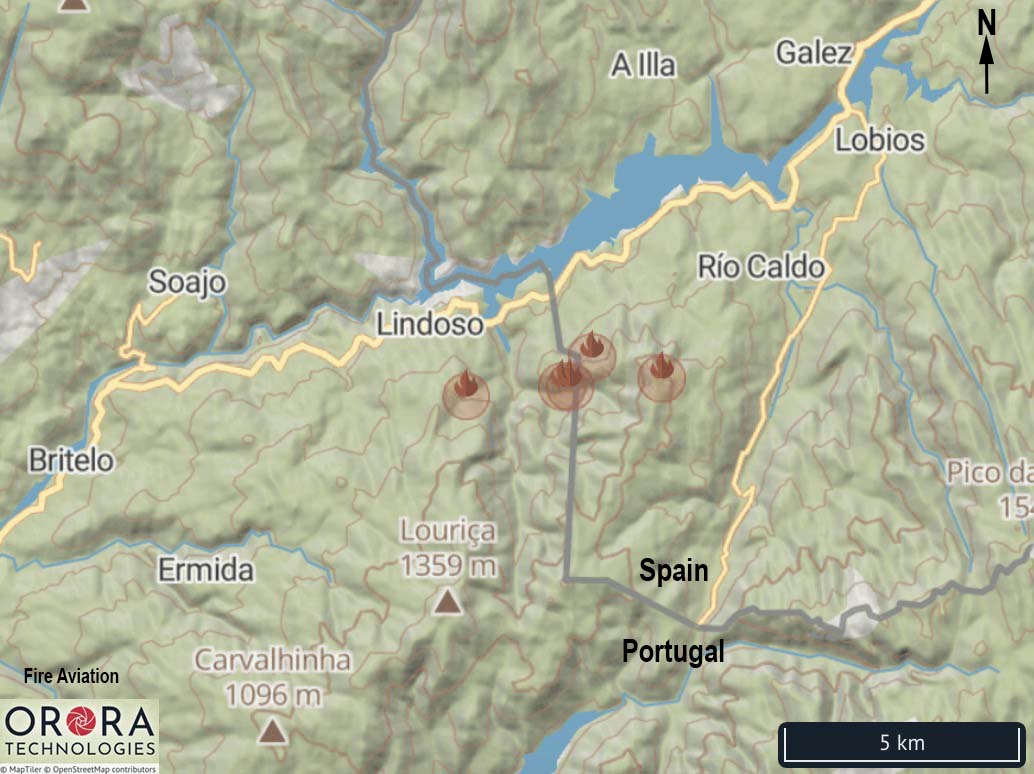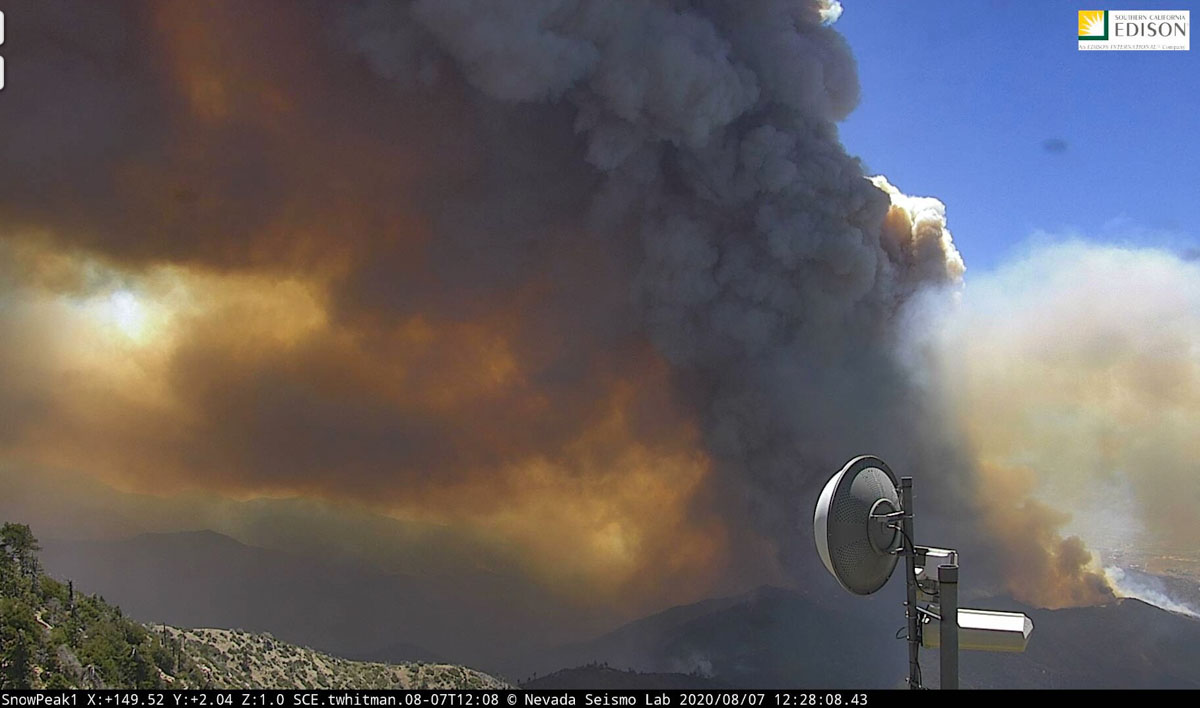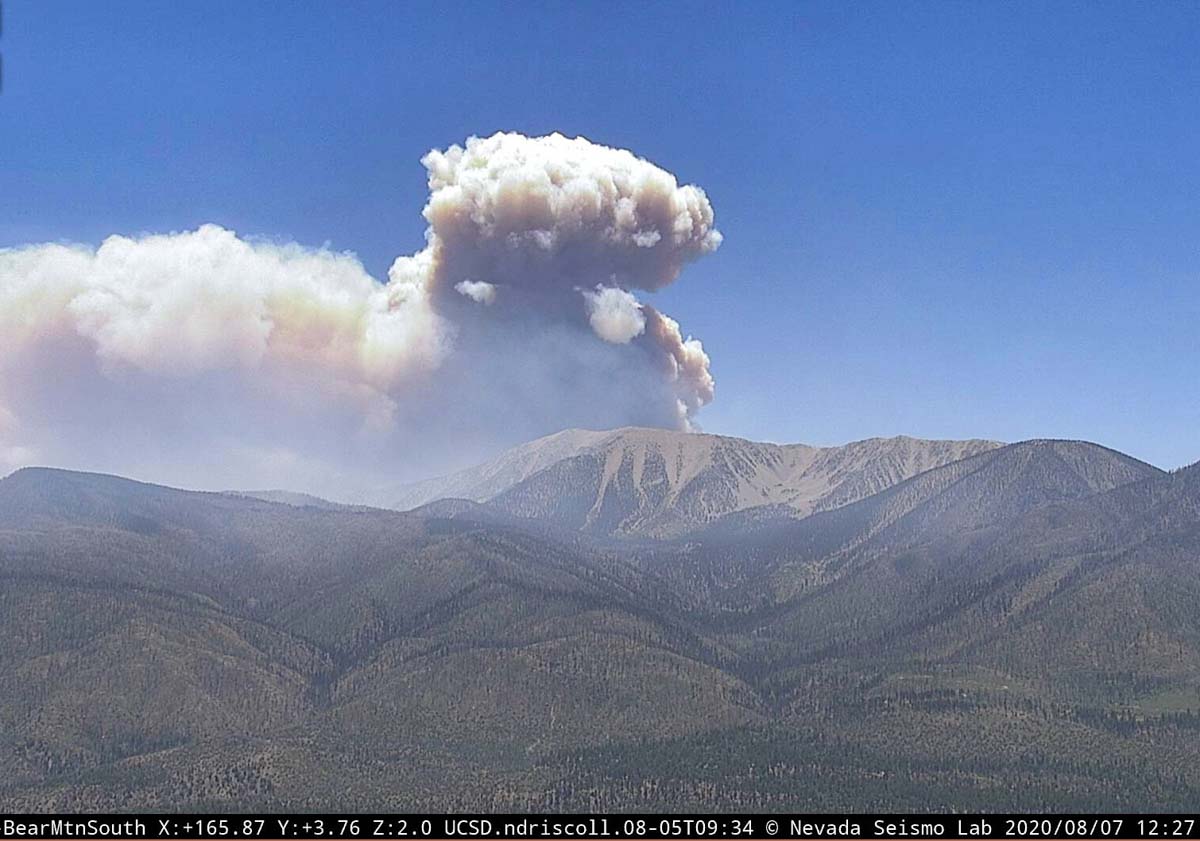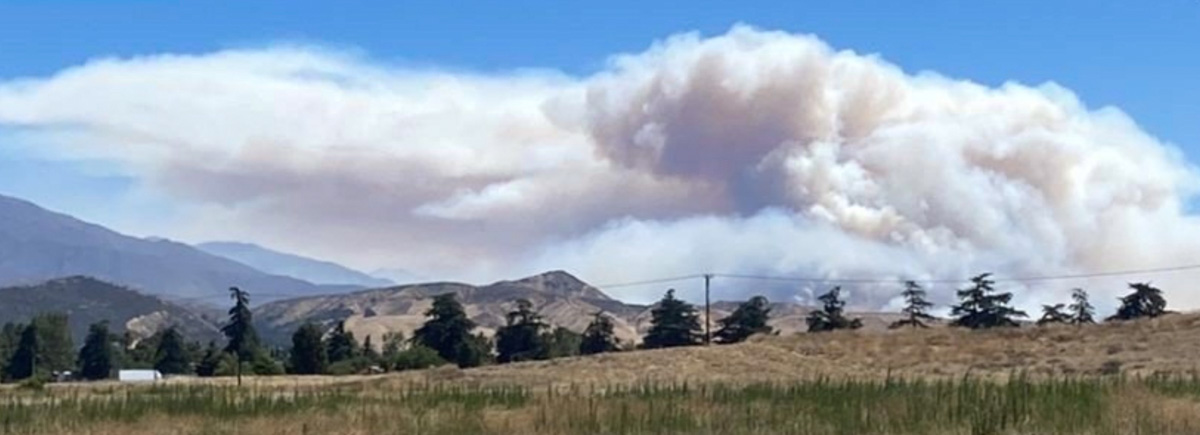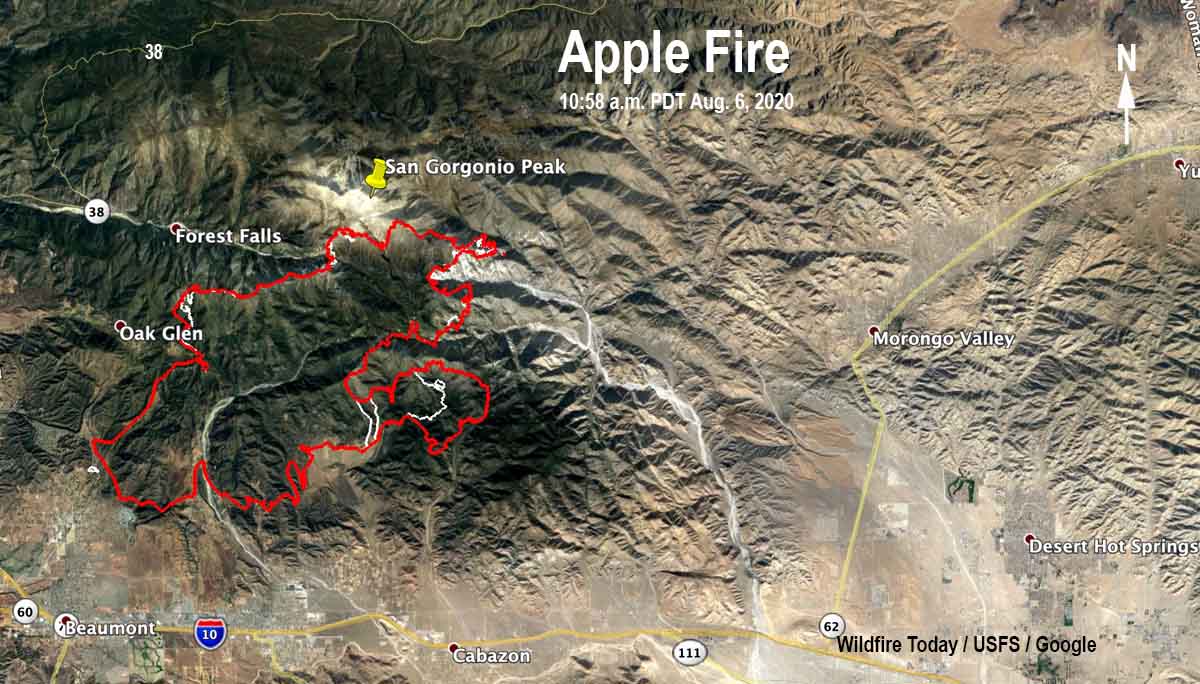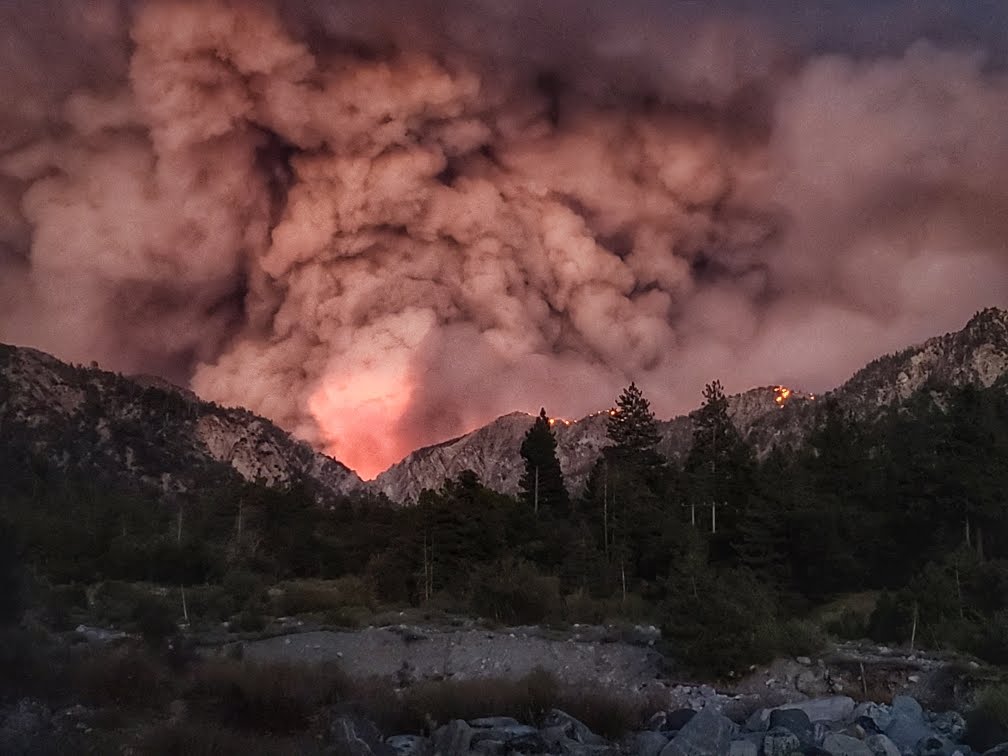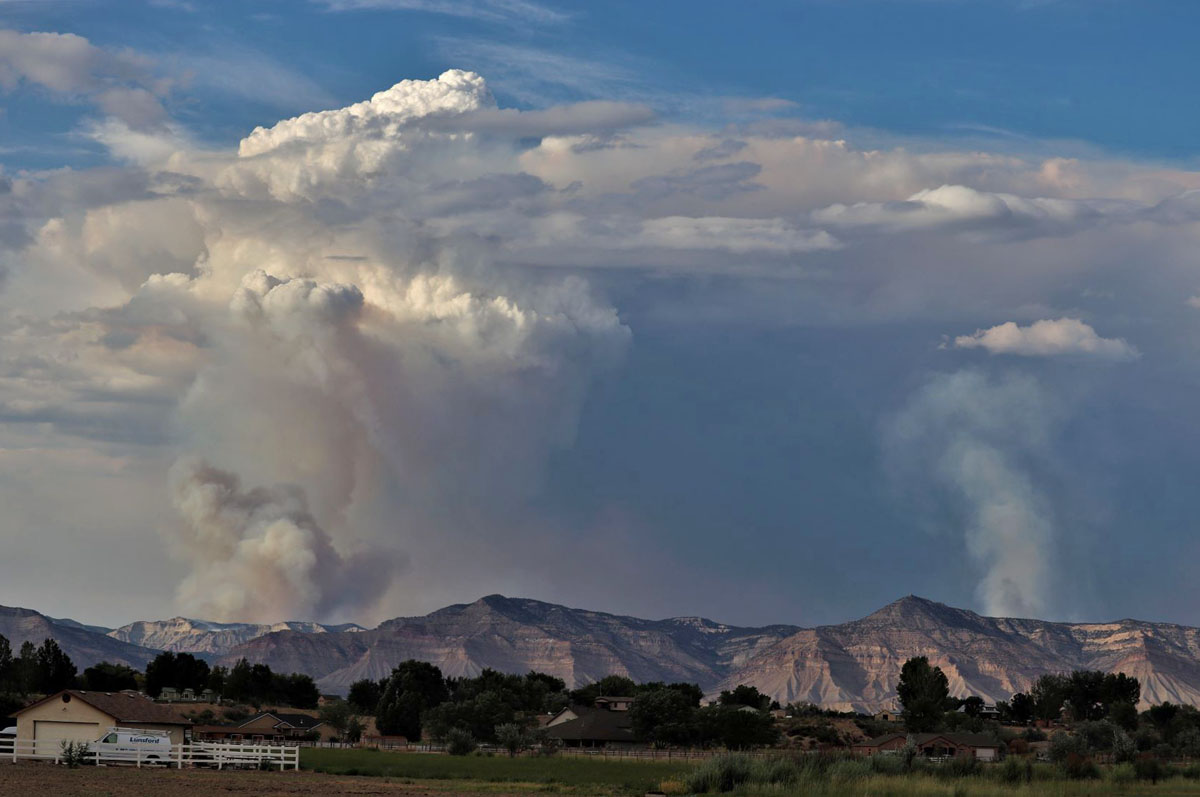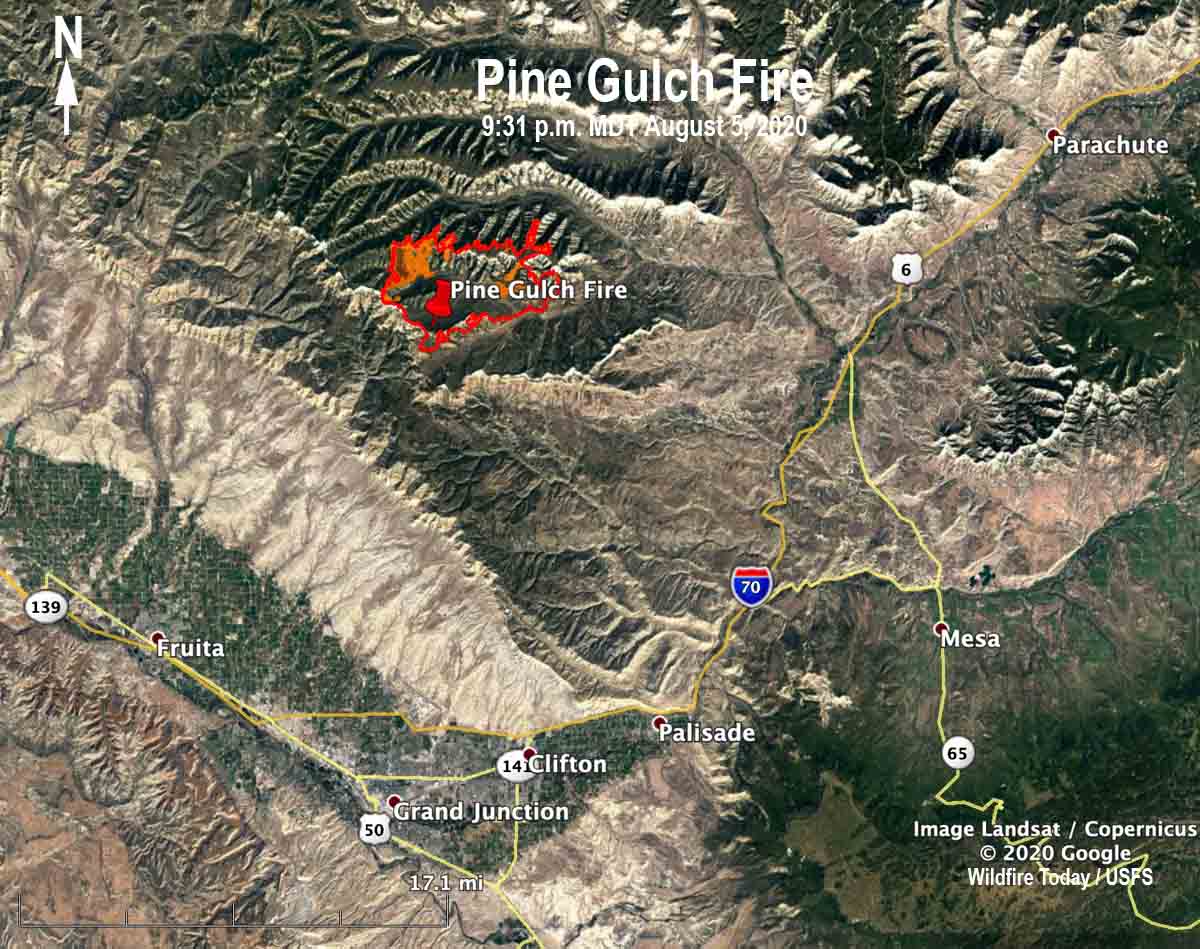August 14, 2020 | 6:38 p.m. MDT

The Grizzly Creek Fire east of Glenwood Springs more than doubled in size Thursday, running over 4 miles northeast on the north side of Interstate 70, burning across Hanging Lake. There was also another large slop-over south across the Interstate, expanding 2.5 miles to the southeast.
For locals, Hanging Lake is a very beautiful and special landmark. Fire officials said the immediate area around it was not severely burned.
To see all articles on Wildfire Today about the Grizzly Creek Fire, including the most recent, click here.
A mapping flight Thursday night found that the fire grew by 7,190 acres, to bring the total to 13,441 acres.
Denver7 News reported at 1 p.m. that all non-emergency flights at the Glenwood Springs Airport were suspended until further notice so it could be used for fire operations.
Large round Heliwells and smaller folding tanks are being set up at the small No Name exit off Interstate 70 to serve as dipping points for helicopters battling the fire.
The small I-70 exit called No Name is almost a functioning helo dipping port with large containers to mix fire retardant. Roadway will continue to be closed as drops on the #GrizzlyCreekFire continue. pic.twitter.com/QdOAz13xKu
— William Woody (@wwoodyCO) August 14, 2020
August 13, 2020 | 3:37 p.m. MDT
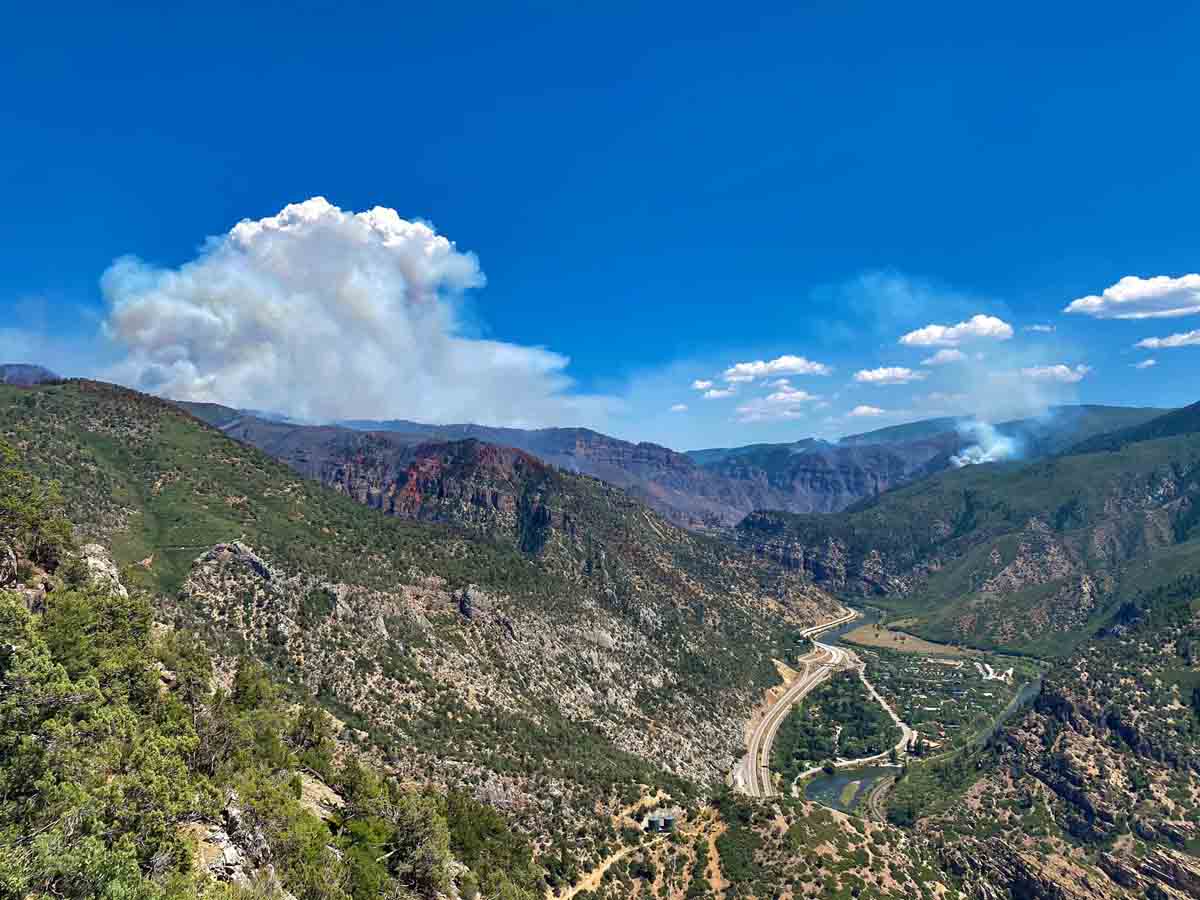
From the Incident Management Team at about 11:30 a.m. MDT August 13, 2020:
“Today’s weather and fire behavior is expected to be similar to Wednesday’s with active fire behavior and Red Flag Warning conditions due to gusty winds and low relative humidity. On Wednesday afternoon, the fire reached the bottom of the No Name drainage, which will be a focus of firefighters today. Hotshot crews are working to contain spot fires along the ridge south of No Name drainage, and establish an anchor point and firelines. Residents in north Glenwood Springs should be prepared for rapidly changing conditions that may lead to pre-evacuation notices. Evacuation information is posted on the Garfield County website at www.Garfield-county.com.
“Firefighters continue to do structure protection in several locations around the fire including the Shoshone Power Plant, Lookout Mountain, and the No Name subdivision. The fire is also fairly active on the east side, near Deadman’s Gulch, where crews are working to keep fire from spotting across I-70 in additional locations. Heavy equipment is working in more accessible areas. Helicopters and airtankers are supporting the efforts of engines and ground crews.
“Great Basin Type 1 Team, with Incident Commander Marty Adell, assumed command of the Grizzly Creek Fire at 6 a.m. today. Daily operations video updates will be posted on the Grizzly Creek Fire facebook page. Maps and other information will also be posted on inciweb at https://inciweb.nwcg.gov/incident/6942/. The team will host a virtual FaceBook live community meeting at 6 p.m. Friday, August 14, 2020.”
August 13, 2020 | 8:28 a.m. MDT

The Grizzly Creek Fire east of Glenwood Springs, Colorado grew substantially to the northeast Wednesday by 1.7 miles, adding another 2,548 acres to bring the total up to 6,250 acres.
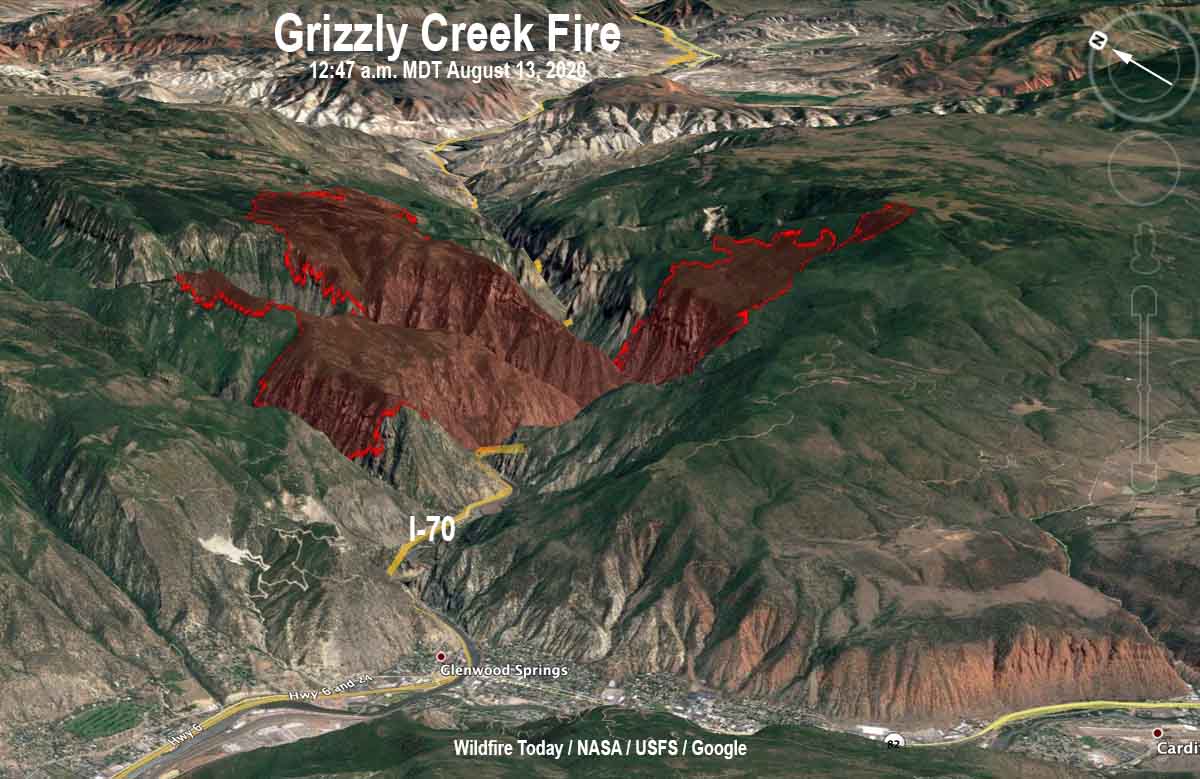
(We will add more information about the fire later on Thursday.)
August 12, 2020 | 6:46 p.m. MDT

A satellite overflight at 1:42 p.m. Wednesday determined that the Grizzly Creek Fire two miles east of Glenwood Springs, Colorado had spread to the northeast during the previous 12 hours. Most of the additional acreage was north of Interstate 70. The heat detected by the satellite, including the new growth, is indicated by the red dots on the map above.
The wind Wednesday afternoon measured by a weather station near the tunnel at No Name west of the fire was more moderate than in recent days. It was primarily from the west at three to six mph and the relative humidity bottomed-out at 15 percent. If this was representative of the weather on most of the fire it explains why there was little heat detected on the west side of the fire nearest Glenwood Springs.
August 12, 2020 | 7:32 a.m. MDT
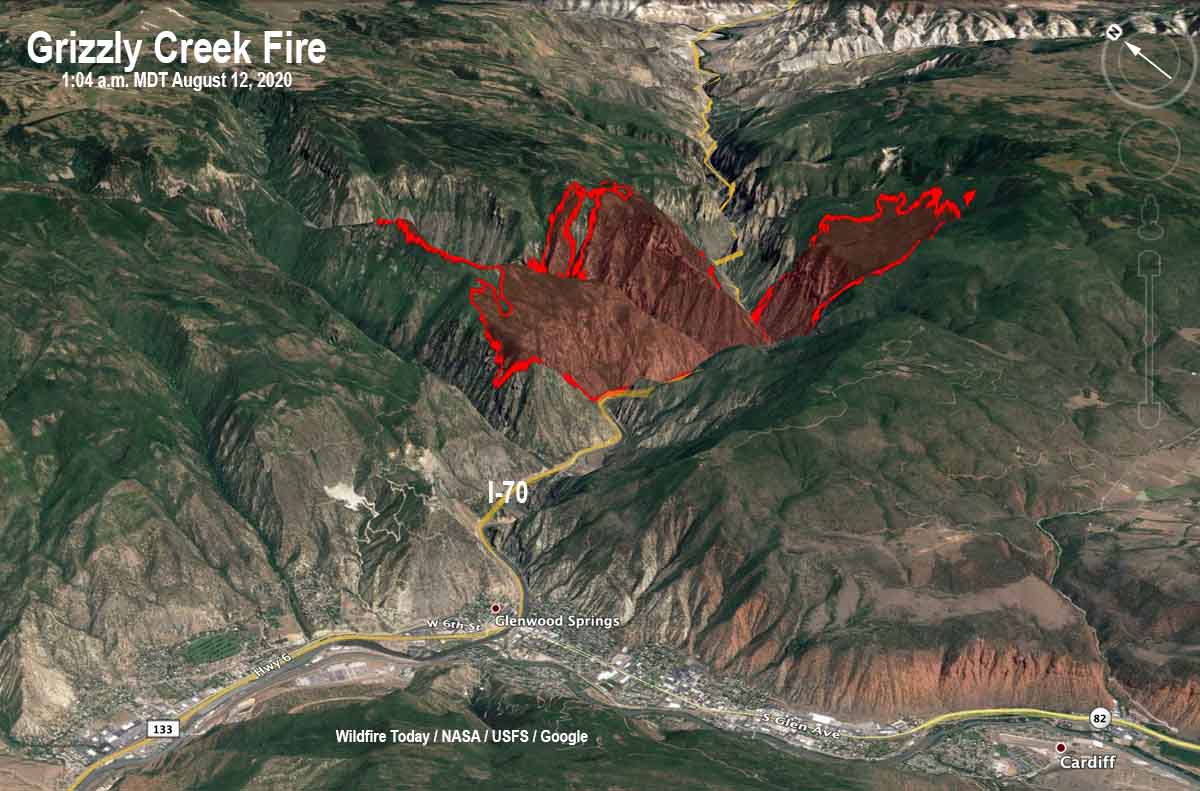
Tuesday afternoon the Grizzly Creek fire was extremely active, spreading in almost all directions. It moved farther north deeper into the White River National Forest and spotted south across the Interstate and the Colorado River where it is now well established. The initial crossing of the river occurred on the southeast side of the fire northeast of Lookout Mountain.
(To see all articles about the Grizzly Creek Fire, including the most recent, click here.)
At 1:04 a.m. Wednesday the fire was mapped by a U.S. Forest Service using a Beechcraft 200 Super King Air. They determined that the fire had burned 3,702 acres and during the previous 24 hours ran one mile north, one mile northeast, and almost two miles across the river to the southeast. The growth to the west was not as rapid as the other sides of the fire and it was still about two miles from Glenwood Springs. At that time it was about 0.75 mile away from the community of No Name at Interstate 70 and had not crossed No Name Creek.
Again, most of the firefighting Tuesday was done from the air, since on the steep slopes and with the extreme fire behavior there was little firefighters on the ground could do to stop the spread.
Evacuations are in effect for Lookout Mountain, Coulter Creek, and the community of No Name.
Firefighters are conducting preparation work in the evacuated communities and Shone Power Plant, evaluating structures and helping create defensible space where practical.

